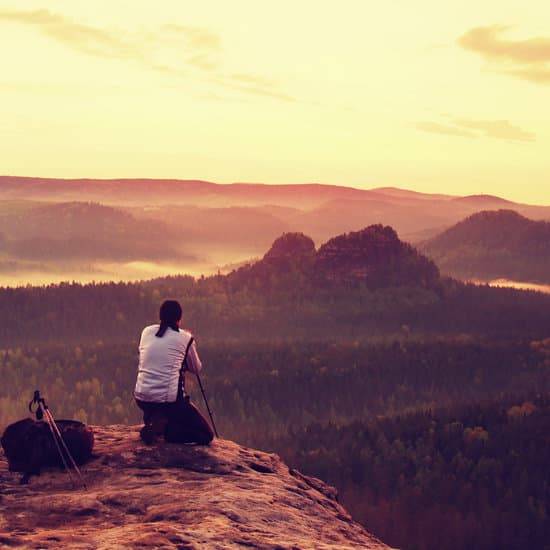Wildlife photography is an awe-inspiring art form that allows us to capture the beauty, majesty, and uniqueness of the natural world. It offers a window into the fascinating lives of creatures big and small, showcasing their behaviors, habitats, and the delicate balance of ecosystems. But venturing into the realm of wildlife photography can be an exhilarating yet challenging endeavor. It requires a combination of technical skill, patience, and a deep appreciation for nature.

In this blog post, we will delve into the world of wildlife photography and explore the essential knowledge and skills needed to not only learn but also thrive in this captivating field. Whether you are a beginner taking your first steps or an enthusiast looking to refine your craft, we will provide you with valuable insights, tips, and techniques that will help you capture stunning wildlife photographs.
From understanding the basics of photography to mastering the art of patience and observation, we will guide you through the process of preparing for wildlife encounters, composing captivating shots, and showcasing your work. We will also address the challenges that come with photographing unpredictable subjects in ever-changing environments.

So, join us on this journey of discovery and immerse yourself in the wonders of wildlife photography. Through dedication, knowledge, and a deep connection to the natural world, you can capture breathtaking images that not only inspire others but also contribute to the conservation and appreciation of our precious wildlife. Get ready to embrace the wild and embark on an adventure like no other.
A. Understanding the basics of photography (aperture, shutter speed, ISO, composition)
Photography is an art form that allows us to freeze moments in time and express our creative vision. To capture stunning images, it is essential to grasp the fundamental elements of photography. In this blog post, we will explore four key components: aperture, shutter speed, ISO, and composition. Understanding these concepts will empower you to take control of your camera and unleash your creativity in the world of photography.

- Aperture: Aperture refers to the opening in the lens through which light enters the camera. It is represented by an f-number (e.g., f/2.8, f/11). In wildlife photography, aperture controls the depth of field, which determines how much of the image is in sharp focus. A wide aperture (small f-number) creates a shallow depth of field, allowing you to isolate the subject from the background and create a beautiful blur. On the other hand, a narrow aperture (large f-number) increases the depth of field, bringing more of the scene into focus, which can be beneficial when photographing wildlife in their environment.
- JShutter Speed: ISO measures the sensitivity of the camera’s image sensor to light. In wildlife photography, lighting conditions can vary, especially when photographing in challenging environments such as forests or during twilight hours. A low ISO setting (e.g., 100) is suitable for bright, well-lit conditions, as it produces cleaner images with less noise. However, in low-light situations, increasing the ISO (e.g., 800, 1600) allows you to capture properly exposed images without sacrificing shutter speed. It is important to strike a balance between ISO and other settings to maintain optimal image quality while managing noise levels.
- ISO: ISO measures the sensitivity of the camera’s image sensor to light. In wildlife photography, lighting conditions can vary, especially when photographing in challenging environments such as forests or during twilight hours. A low ISO setting (e.g., 100) is suitable for bright, well-lit conditions, as it produces cleaner images with less noise. However, in low-light situations, increasing the ISO (e.g., 800, 1600) allows you to capture properly exposed images without sacrificing shutter speed. It is important to strike a balance between ISO and other settings to maintain optimal image quality while managing noise levels.
- Composition: Composition refers to the arrangement and placement of elements within the frame. It plays a crucial role in creating visually appealing and impactful wildlife photographs. When composing your wildlife shots, consider the rule of thirds, where you imagine the frame divided into nine equal parts and place your subject or key elements along the intersecting lines or their intersections. Leading lines, such as a tree branch or a river, can guide the viewer’s eye and create a sense of depth. Symmetry, patterns, and negative space are also composition techniques that can enhance the visual impact of your wildlife images.

Understanding the basics of photography, including aperture, shutter speed, ISO, and composition, is crucial for capturing compelling images. By mastering these concepts, you gain control over the technical aspects of your camera and unleash your creative potential. Remember, practice is key. Experiment with different settings and compositions to develop your skills and create photographs that evoke emotions and tell captivating stories. So grab your camera, embrace the fundamentals, and embark on an exciting journey of artistic expression through photography. Experimentation and practice will help you develop a mastery of these elements and allow you to create stunning wildlife photographs that tell captivating stories.

Choosing the right camera gear and lenses is crucial for achieving success in wildlife photography. The equipment you use can significantly impact the quality and versatility of your images. Here are some considerations to help you make informed decisions:
- Camera Body: Investing in a camera body that suits your needs and preferences is essential. Look for a camera that offers high-resolution capabilities, good low-light performance, and fast autofocus. A DSLR or mirrorless camera with interchangeable lenses is highly recommended as it provides flexibility and allows you to adapt to different shooting situations.
- Lens Selection: Selecting the appropriate lenses is key to capturing wildlife shots with the desired level of detail and reach. Here are a few types of lenses commonly used in wildlife photography:a. Telephoto Lens: A telephoto lens with a long focal length is a staple for wildlife photography. It allows you to bring distant subjects closer, making it ideal for capturing animals in their natural habitat without disturbing them. Look for lenses with focal lengths in the range of 200mm to 600mm or longer, depending on your specific needs and budget.b. Zoom Lens: A versatile zoom lens can be useful when you need the flexibility to adjust focal lengths on the go. Consider a telephoto zoom lens, such as a 70-200mm or 100-400mm, which provides a range of focal lengths suitable for a variety of wildlife photography situations.c. Macro Lens: A macro lens is valuable for capturing the intricate details of small creatures like insects and flowers. With a close focusing distance and high magnification, macro lenses allow you to capture stunning close-ups with exceptional clarity.
- Image Stabilization: When photographing wildlife, stability is crucial, especially when using telephoto lenses with long focal lengths. Look for lenses or camera bodies that offer image stabilization technology, which helps reduce camera shake and allows for sharper handheld shots. This feature becomes particularly important when shooting in low-light conditions or when capturing fast-moving subjects.
- Weather Resistance: Wildlife photography often takes you into various outdoor environments, including challenging weather conditions. Consider investing in weather-sealed camera bodies and lenses to protect your gear from dust, moisture, and extreme temperatures. This will ensure your equipment withstands the rigors of the wild and allows you to continue shooting even in adverse conditions.
- Additional Accessories: Alongside your camera body and lenses, there are a few additional accessories that can enhance your wildlife photography experience. These include a sturdy tripod or monopod for stability, extra camera batteries and memory cards for extended shooting sessions, a remote shutter release for minimizing camera shake during long exposures or when using a tripod, and lens filters to protect your lenses and control light and reflections.
Ultimately, the choice of camera gear and lenses for wildlife photography depends on your specific requirements, budget, and shooting style. It’s essential to research and test different equipment options before making a decision. Remember, investing in quality gear will provide you with the tools necessary to capture stunning wildlife images and elevate your photography skills.
To excel in wildlife photography, it is crucial to have a deep understanding of the behavior and habitat of the species you wish to photograph. This knowledge allows you to anticipate their actions, locate them effectively, and capture compelling images that truly reflect their natural essence. Here’s how you can learn about the behavior and habitat of different wildlife species:

- Research and Study: Begin by immersing yourself in books, online resources, scientific papers, and field guides that provide detailed information about the species you want to photograph. Learn about their preferred habitats, feeding patterns, breeding seasons, social behaviors, and migration patterns. Understanding these aspects will help you predict their movements and increase your chances of encountering them in the wild.
- Observe and Spend Time in Nature: Nothing compares to firsthand experience. Spend time observing wildlife in their natural habitat. Visit wildlife reserves, national parks, or local nature reserves where your target species reside. Patiently observe their behaviors, interactions, and daily routines. Pay attention to their feeding habits, nesting or denning areas, and preferred resting spots. This hands-on experience will deepen your understanding of their behavior and enable you to capture more authentic images.
- Seek Guidance from Experts: Connect with wildlife experts, researchers, and experienced wildlife photographers who specialize in the species you are interested in. Attend workshops, join photography tours, or participate in guided expeditions led by professionals who can provide valuable insights and share their knowledge. Their expertise can give you a unique perspective on the behavior and habitat of the wildlife you wish to photograph.
- Network with Local Communities: Engage with local communities, naturalists, and wildlife enthusiasts who have intimate knowledge of the region and its wildlife. They can share stories, folklore, and local knowledge about the behavior and habitat of the species. Their insights can be invaluable in locating and photographing specific wildlife populations that may be less documented or found in remote areas.
- Respect Wildlife and Their Habitat: While learning about wildlife behavior and habitat, it is crucial to prioritize ethical practices and conservation. Respect wildlife from a distance, and avoid disturbing their natural behaviors or altering their environment for the sake of a photograph. Follow designated trails, adhere to park regulations, and always prioritize the welfare and conservation of the animals.
By dedicating time to research, observation, and learning from experts, you can develop a profound understanding of the behavior and habitat of different wildlife species. This knowledge will not only enhance your photography skills but also deepen your appreciation for the natural world. Remember, wildlife photography is not just about capturing beautiful images; it is about fostering a connection with the subjects and using your photographs to raise awareness and promote conservation efforts.

Embarking on a wildlife photography journey requires a strong foundation in the basics of photography, the right gear, and an understanding of wildlife behavior. These essential elements will serve as the building blocks for your growth and success in capturing captivating images of the natural world. By establishing this solid groundwork, you will be well-equipped to embark on your wildlife photography adventure and create stunning photographs that truly capture the essence of the wild.

